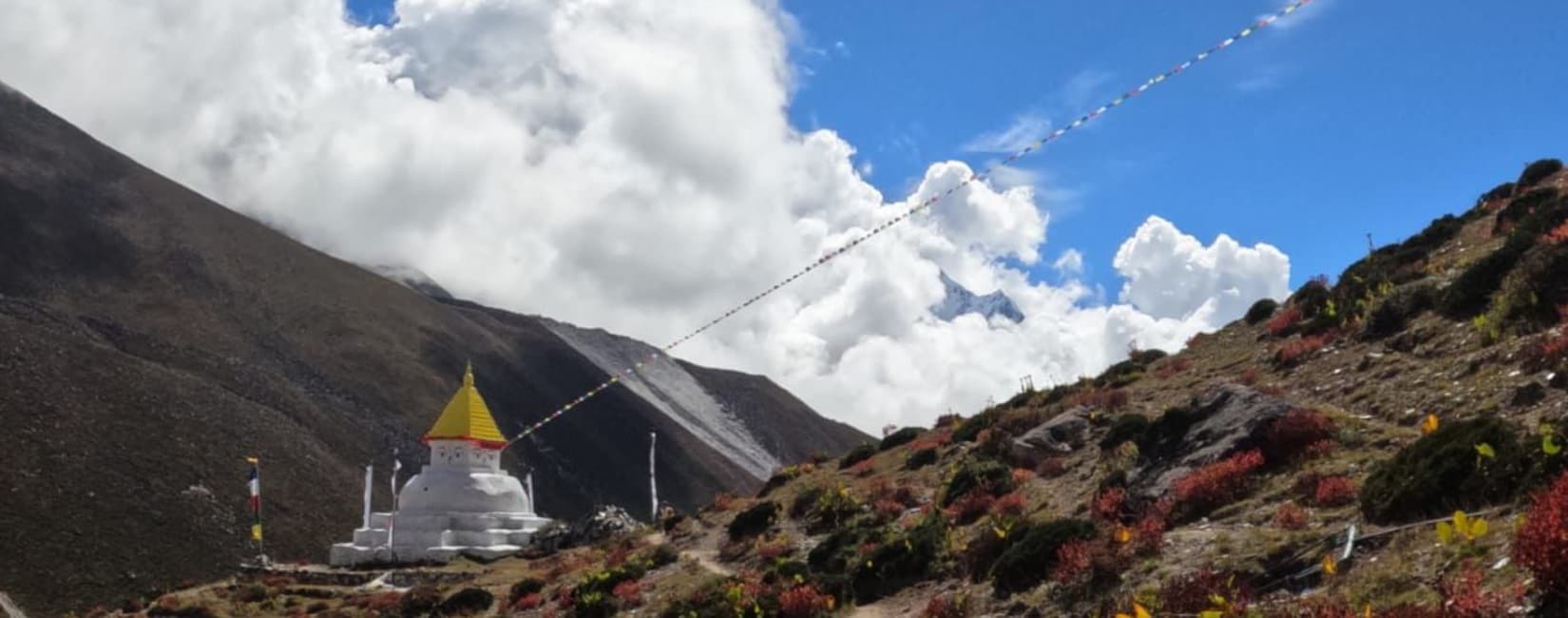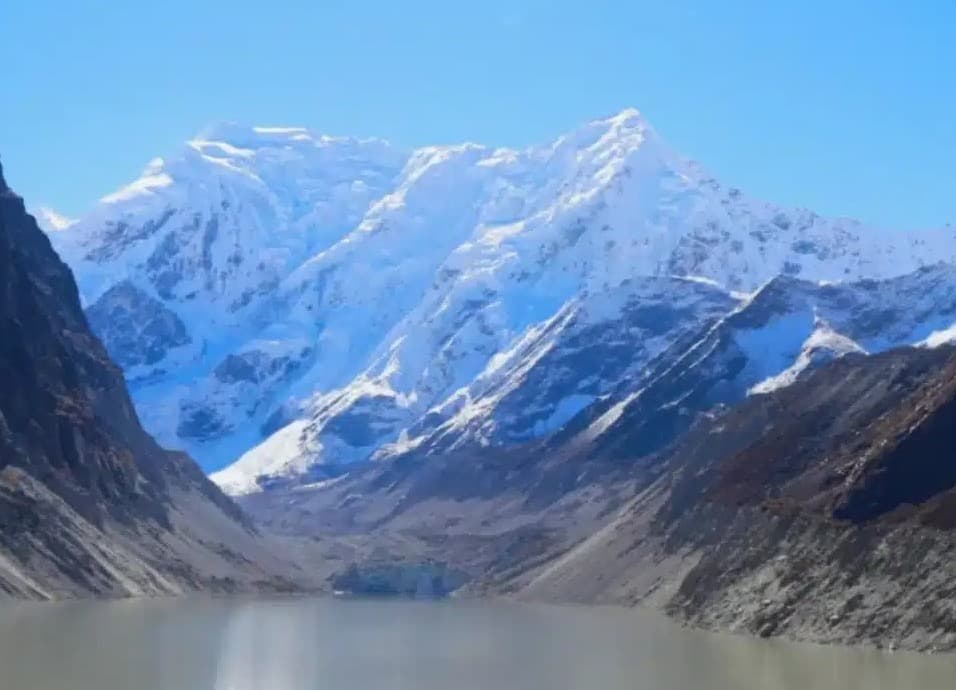Trekking in the Everest region is more than just walking toward the base of the world’s highest peak. While the snow-capped mountains and rugged trails capture the imagination, the spiritual soul of the Khumbu lies in its monasteries. These Buddhist gompas, some hundreds of years old, are living centers of Sherpa tradition. They offer trekkers moments of peace, cultural insight, and an opportunity to connect with the spiritual side of the Himalayas.
Below, we explore the most significant monasteries in the Everest region and why you should include them in your journey.
Tengboche Monastery – The Spiritual Heart of Everest
Tengboche Monastery, also known as Dawa Choling Gompa, is the most famous and the largest monastery in the Everest region. Located at 3,867 meters, it sits on a ridge with sweeping views of Everest, Ama Dablam, and Lhotse. For trekkers on the Everest Base Camp trek, arriving at Tengboche feels like stepping into a sacred space surrounded by natural grandeur.
The monastery was first established in 1916 but has been rebuilt multiple times due to natural disasters. Today, it serves as a vibrant center for Sherpa Buddhism. The highlight of the year is the Mani RImdu festival, celebrated in October or November. During this time, monks perform masked dances, prayers, and rituals that attract both locals and international visitors.
Even if you are not trekking during the festival, Tengboche is an unforgettable stop. Listening to the chants of monks inside the main prayer hall while gazing out at the world’s highest peaks is an experience that blends both adventure and spirituality.
Pangboche Monastery – The Oldest Monastery in Khumbu
At 3,985 meters lies Pangboche Monastery, believed to be the oldest monastery in the Everest region. Founded in the 17th century by Lama Sanga Dorje, it has stood for centuries as a guardian of Sherpa faith and tradition.
Pangboche gained fame for once housing a relic said to be the scalp of a Yeti, a legend that continues to fascinate trekkers. Though the relic disappeared years ago, the monastery remains deeply spiritual. Its ancient murals, sacred texts, and traditional architecture offer visitors a glimpse into the history of Buddhism in the Khumbu.
Trekkers passing through Pangboche often stop here for blessings before continuing toward higher altitudes. The monastery not only enriches the cultural side of the trek but also provides reassurance as climbers venture closer to Everest Base Camp.
Khumjung Monastery – Home of the Mysterious Yeti Scalp
Nestled in the Sherpa village of Khumjung, this monastery is another highlight for trekkers acclimatizing near Namche Bazaar. At 3,790 meters, Khumjung Monastery is renowned for displaying a relic believed to be a Yeti scalp. Whether or not you believe in the legend, the artifact continues to attract curiosity from visitors around the globe.
Beyond the legend, Khumjung Monastery is significant because of its role in Sherpa culture. The village itself is charming, surrounded by potato fields and overlooked by Khumbila, a sacred mountain considered too holy to climb. Visiting this monastery gives trekkers a deeper appreciation of Sherpa spirituality, where mythology, faith, and daily life are closely intertwined.
Debuche Nunnery – A Quiet Sanctuary for Nuns
Just a short walk downhill from Tengboche lies Debuche Nunnery, one of the few nunneries in the region. Established as part of Tengboche Monastery, it has grown into a peaceful retreat run by Buddhist nuns.
The nunnery provides a different perspective on Himalayan Buddhism. While most monasteries are run by male monks, Debuche highlights the role of women in preserving and practicing Buddhist teachings. For trekkers, visiting this nunnery is an opportunity to witness daily rituals in a calm and less crowded environment. The quiet atmosphere here makes it an ideal place to reflect and recharge before continuing the trek.
Thame Monastery – Off the Beaten Path
Far from the busy Everest Base Camp trail lies Thame Monastery, one of the oldest monasteries in the Khumbu. Situated at 3,800 meters, it overlooks the picturesque Thame Valley. This village is the birthplace of Tenzing Norgay Sherpa, the legendary mountaineer who, with Sir Edmund Hillary, became the first to summit Everest in 1953.
Because of its location, Thame Monastery is often visited by trekkers taking the Three Passes Trek or those exploring lesser-known routes. Its hillside setting offers panoramic views, while the monastery itself maintains a strong sense of authenticity. Visitors here experience Sherpa spirituality away from the crowds, making it one of the most rewarding cultural stops in the region.
Why Monasteries Matter on the Everest Trek
Monasteries are not just landmarks; they are the living heart of the Khumbu. For trekkers, they add depth and richness to the Everest journey.
Understanding Sherpa Culture: Sherpa life is deeply connected to Buddhism, and monasteries serve as cultural and spiritual centers. They host festivals, religious ceremonies, and community events that bring people together. Visiting a monastery allows trekkers to understand the values that guide the Sherpa way of life, beyond what is seen on the surface.
Experiencing Spiritual Peace: Trekking in the high Himalayas can be exhausting, but monasteries offer rare moments of serenity. Inside their walls, the atmosphere shifts. The rhythmic chanting of monks, the fragrance of incense, and the sight of prayer flags fluttering in the wind create a calmness that refreshes both body and soul. Many trekkers find these moments just as rewarding as reaching a mountain viewpoint.
Discovering Himalayan Legends: The monasteries of the Everest region are steeped in stories. Some hold relics tied to the mythical Yeti, while others preserve murals and scriptures that date back centuries. These legends and histories give a deeper dimension to the trekking experience, reminding travelers that the Himalayas are not only about landscapes but also about timeless stories.
Connecting with Locals: Monasteries are where travelers can directly engage with the Sherpa community. Meeting monks, nuns, or villagers and observing their rituals provides insight into how spirituality shapes everyday life. Receiving a blessing before continuing the trek is often described by trekkers as a highlight of their journey.
Practical Tips for Visiting Monasteries
Because monasteries are sacred spaces, it is important to approach them with respect and mindfulness. Here are some tips for making your visits meaningful.
Respect Traditions: Always walk clockwise around stupas, prayer wheels, and mani walls. This practice follows Buddhist customs and shows respect for local traditions.
Dress Modestly: While trekking gear is common on the trail, cover your shoulders and legs before entering a prayer hall. Carrying a scarf or light shawl makes it easy to adapt quickly when visiting a sacred site.
Photography Etiquette: Many monasteries allow photography, but some do not, especially inside prayer halls. Always ask before taking pictures, and avoid using flash, as it can damage fragile murals and artifacts.
Offer Donations: Monasteries depend on donations for upkeep and for supporting monks and nuns. A small contribution helps preserve these historic sites and ensures they continue to thrive for future generations.
Participate Mindfully: If invited to join a prayer session, enter quietly and observe respectfully. Sit silently, listen to the chants, and appreciate the rituals without interrupting. This approach shows reverence and allows you to experience the ceremony authentically.
By following these practices, you not only enrich your own journey but also show genuine respect for Sherpa culture and traditions.
Final Thoughts
The monasteries of the Everest region transform a trek into a cultural and spiritual journey. Tengboche inspires with its grandeur, Pangboche captivates with its history, Khumjung intrigues with its legends, Debuche offers peace and reflection, and Thame provides authenticity far from the crowds. Together, they tell the story of Sherpa faith and resilience in the face of the harsh Himalayan environment.
At Heaven Himalaya, we encourage trekkers to go beyond the trail and embrace these cultural treasures. Visiting monasteries brings balance to the physical challenge of trekking, creating experiences that touch both the heart and soul.
If you are ready to discover the spiritual side of the Himalayas, join our Everest Base Camp Trek or explore other Everest Region Treks with Heaven Himalaya. With us, your journey will not only be about mountains but also about the living spirit of the people who call them home.











